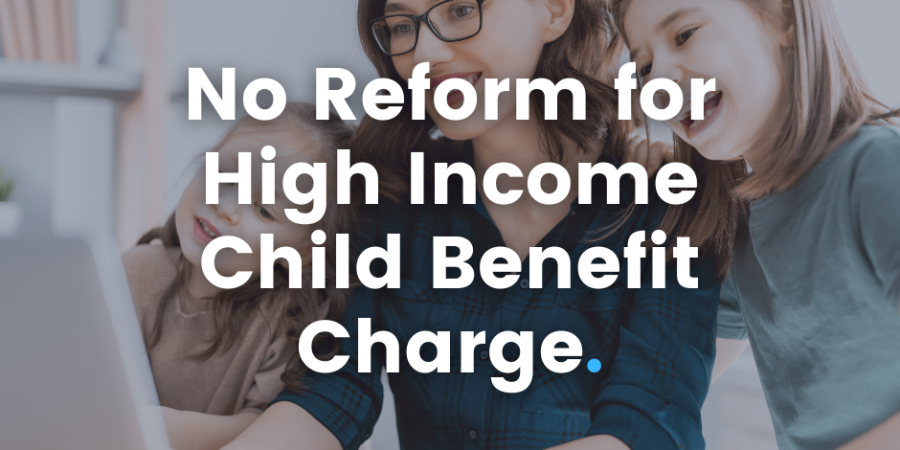High Income Child Benefit Charge will not be reformed
We’ve recently seen changes to the High Income Child Benefit Charge from April 2025, which saw an increase to the income level at which you start to lose the entitlement to the benefit and also a higher threshold at which it is lost completely. This was welcome news for many households who have been subject to the higher rate charge, and even more so that it was also outlined that there would be further reform to the process.
It has now been announced that the current rules and thresholds will remain as they are without further consideration around addressing some of the issue that come from the current policy.
So, how does the High Income Child Benefit Charge work?
- It is based on the highest income earner in the household regardless of whether they are the person in receipt of the benefit.
- Once someone’s adjusted net income exceeds £60,000 you start to lose the entitlement to the child benefit you have received.
- Adjusted net income is important as this may differ from your gross income, as things such as pension contributions and gift aided donations help to bring this figure down.
- The amount of benefit that is repayable is tapered for someone earning between £60,000 and £80,000. The nearer you are to £80,000 proportionately the more benefit that becomes repayable. Once you exceed £80,000 the full amount is repayable.
- The way that it is repaid is by completing a self-assessment tax return – so pulls you into the regulatory compliance of doing a return each year.
Why was reform suggested?
As mentioned the current rules are based on the earnings of highest earner in the household. So based under these rules you could have one person in the household earning £80,000 and their spouse/partner not working and they would lose their entitlement in full, whereas another household with two people working both earning £60,000 each would keep their entitlement in full.
The reform suggested was to look at household income rather than the higher earner to get a fairer balance.
Even though this policy has been in place for some time, we still see errors in this where people omit the information from their returns, which results in a compliance check from HMRC.
Alongside the announcements made in the Autumn Statement, it was announced that HMRC will be investing into their systems to correlate information between their system to start to pre-populate information into taxpayers records. This is due to come into effect from April 2026.
In addition to this from April 2025, HMRC will allow taxpayers to adjust for this charge via their tax codes – tax codes are one of the biggest areas we see issues with HMRC’s consistency to approach of collecting tax or adjusting for income – what could possibly go wrong here!
Not sure how this affects you – reach out to the team here today!







